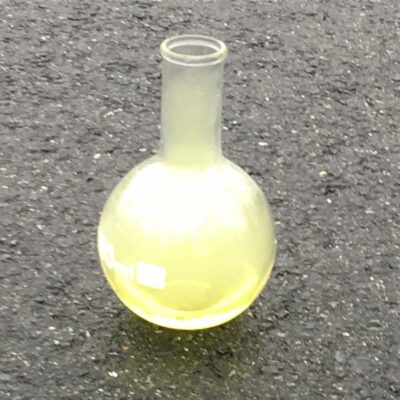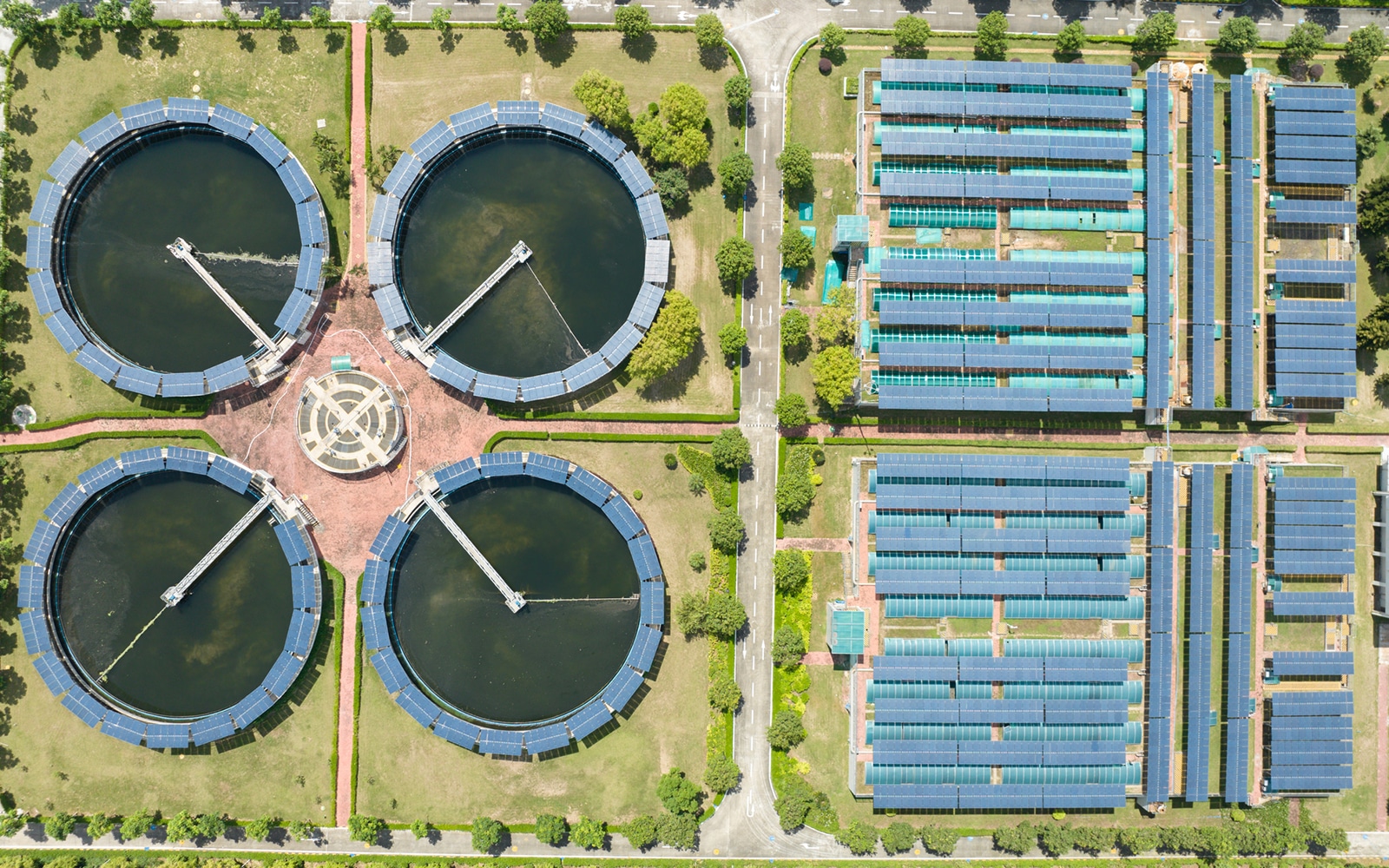- Chlorine is one of the most used disinfectants for water treatment plants, but it is toxic and a health hazard.
- Accidents during transportation and leakages during storage and handling are common causes of hazards.
- Chlorine detection and neutralizing, along with wearing protective gear, can reduce the risks associated with the use of this common industrial disinfectant.
Chlorine is a standard disinfectant in water treatment facilities. However, safety and health risks are involved, which facility engineers and safety managers must remember during chlorine storage, transport, and handling. Chlorine detection can reduce these risks and should be integral to each water treatment facility’s operation. Find out more about chlorine risks and detection.
Chlorine as Disinfectant in Water Purification Facilities
Chlorine is used for water treatment as it acts as a disinfectant that is effective against a wide range of pathogenic water-borne microbes. It can also effectively oxidize some inorganic and organic compounds present as impurities.
Besides chlorine, ozonization and UV disinfection can also be used. However, chlorine use is widespread mainly because it is more cost-effective.
- Chlorination advantages are that it is a reliable technology and allows for flexible dosing control.
- Chlorination’s disadvantages are that it is toxic and corrosive. Some pathogens have developed resistance to lower chlorine doses, so more chemicals must be used in some instances. Any chlorine residue in water is harmful to aquatic life.
During chlorination, it is added to water as a gas. Another method is adding hypochlorite salts, which produce hypochlorite ions or free available chlorine and hypochlorous acid after hydrolysis and ionization. The necessary degree of disinfection is achieved by varying dosage and contact time.
Chlorine is cooled and pressured into a liquid for transportation.
Chlorine Properties
Chlorine exists as a gas or liquid; all forms are hazardous and must be treated carefully. It is necessary to consider some chlorine properties to ensure effective detection and management in water treatment facilities.
General properties pertaining to chlorine hazards are listed below:
- The chemical reacts with water to form a corrosive solution.
- It can be stored at ambient temperatures.
- Venting pressures for safety are 300 psi.
- It reacts with metals at high temperatures.
Chlorine gas properties are as follows:
- Chlorine gas is 2.48 times heavier than air and sinks to the ground. It is a visible gas, greenish-yellow in color, with a bleach-like penetrating odor.
- Chlorine gas is non-flammable, but it is a strong oxidizer. Most combustibles burn in chlorine to generate toxic products.
Liquid chlorine properties of concern in a water facility are as follows:
- Liquid chlorine is 1.44 times heavier than water. When added to water, it boils and sinks to the bottom.
- Liquid chlorine is visible and amber-colored.
- It vaporizes at standard pressure and temperature in the ratio 1: 450; that is, one liter of liquid gives 450 liters of chlorine gas.
How Do Chlorine Hazards Occur?
Chlorine is a health and safety hazard. Chlorine gas is poisonous and was used as a chemical weapon in World War I and Iraq in 2007.
Exposure risks to chlorine can occur during transportation, handling, and accidents. An accidental release can affect people at the water treatment facility and surrounding areas.
Chlorine is one of the most frequent causes of toxic accidents worldwide. As it is widely used in many industries, the chances of accidents are high. In 2007, a chlorine rail tanker collision with another train released 90 tons of gas. Nine people died, and 520 needed emergency treatment due to exposure at the accident site.
Chlorine is classified as a human contact hazard category II and a “3” or blue category health hazard in the US.
Health hazards arise through contact and entry into the eyes and inhalation. When the gas comes in contact with moist surfaces in the eyes, throat, and lungs, it turns into an acid.
Water can be contaminated with chlorine, but due to its color, pungent odor, and taste, people are unlikely to consume water that still has chlorine.

Larenmclane, CC BY-SA 4.0 <https://creativecommons.org/licenses/by-sa/4.0>, via Wikimedia Commons
Chlorine Health Impacts
The effect of chlorine depends on intensity, duration, and physical state. Since the gas is breathed in, people with chronic lung diseases, like asthma, are more sensitive to the gas. See Table 1 for details of symptom development.
Acute Effects
Chlorine gas irritates the eyes, throat, and lungs. Low chlorine gas levels cause eye irritation, sneezing, salivation, and restlessness, with symptoms lasting for several days.
Chlorine is an asphyxiant at higher concentrations, leading to breathing difficulties, violent coughing, nausea, chest pain, pulmonary edema, pneumonia, and death due to suffocation in extreme cases. Pulmonary edema can even develop a few hours after exposure. Also, chlorine eye contact can result in permanent damage.
Liquid chlorine, on short exposure, causes skin smarting and first-degree burns. Long exposures can result in secondary burns. Rapid evaporation of chlorine causes frostbite.
Chronic Exposure Effects
Repeated exposure affects the lungs and teeth. It can lead to permanent lung damage or chronic bronchitis. Chlorine causes teeth erosion and skin rash. People exposed repeatedly also develop flu-like symptoms and are at risk of reactive airway dysfunction syndrome (RADS), a kind of asthma.
Table 1. “Toxic Effects of Chlorine,” Emergency Response Centre, 2011. (Credits: Safety Guidelines for Chlorine Applications at Water Treatment Plants)
| Chlorine Concentration
| Effects |
| 0.03 – 0.1 ppm | Range of odor threshold |
| 1 – 3 ppm | It may cause mild irritation to the eyes, nose, and throat. |
| 3 – 5 ppm | It is stinging or burning in the eyes, nose, and throat. It could cause headaches, watering eyes, sneezing, coughing, breathing difficulty, bloody nose, and blood-tinged sputum. |
| 5 – 15 ppm | Chlorine causes severe irritation of the eyes, nose, throat, and respiratory tract. |
| 10 ppm | Immediately Dangerous to Life & Health (IDLH) |
| 30 – 60 ppm | Immediate breathing difficulty and pulmonary edema, possibly causing suffocation and death. |
| 430 ppm | Lethal after 30 minutes. |
| 1000 ppm or more | Fatal after a few breaths. |
Exposure limits
According to the US National Oceanic and Atmospheric Administration (NOAA), these are the relevant exposure limits for chlorine.
- Odor Threshold: 3.5 ppm
- OSHA permissible exposure levels PEL/
Threshold limit value (TLV): 1 PPM (2.89 mg/m3)
- Immediately Dangerous to Life & Health (IDLH): 10 PPM
- Total weight average (TWA) limit (8 hours exposure): 1 PPM (For skin)
- National Institute for Occupational Safety and Health (NIOSH)
– Recommended exposure limit (REL) (15 minutes exposure): 0.5 PPM (1.45 mg/m3)
Safety Measures
To avoid accidents, strict protocols must be in place for transport, storage, and handling at water treatment facilities to contain and neutralize chlorine.
The recommended measures are as follows:
- Chlorine leak detection & control is conducted within a prescribed checking protocol.
- Use personal protective equipment, like self-breathing and respiratory protection apparatus, while working with chlorine; and eye safety goggles for handling liquid chlorine.
- Disposal of damaged containers should be handled with proper precautions and trained personnel.
- Conduct routine maintenance of equipment using appropriate repair kits and container repair apparatus.
Chlorine Detection
Due to the hazards, chlorine gas leak detection should be important in water treatment facilities. Safety managers safeguarding employees’ lives and the facility are essential in effective gas detection.
Detection Equipment
Early chlorine leak detection allows safety managers to take appropriate action to prevent accidents. They can follow detection by using neutralization and scrubber units to contain the damage.
The chlorine systems must function when the facilities are online or offline. Detection of chlorine levels over 0.1 ppm (0.289 mg/m3) should trigger alarms to alert people and activate emergency services for decontamination of spillage.
Besides stationary gas detection equipment, the personnel must also have portable chlorine detectors. These can be sensor-based, silver nitrate tests, or ammonia torches.
Location of Gas Detection
Chlorine detection systems should be installed strategically at cylinder storage areas, injection sites, and offload sites. The detectors must be near the cylinders or potential sources in use or storage.
Detectors must not be near ventilation inlets, outlets, or areas of heavy airflow to avoid false negatives. Neither should the testing be done in spots with little air movement. Placing the detection equipment closest to the leak source is the best.
Chlorine gas is heavy, sinks, and spreads around low-lying areas. So the detectors are placed near the floor. Usually, this is about 15 cm or six inches above the floor. This height is better than the floor, as it is better to be alerted as early as possible of a leak before it reaches the bottom.
Detector Testing and Maintenance
Maintenance of detection equipment is vital for accurate measurements and optimal performance.
Some steps to follow in the case of a chlorine detector are listed below:
- Since chlorine reacts with water to form highly corrosive hypochlorous and hydrochloric acids, keep detection equipment dry.
- Chlorine gas is sticky and could remain on surfaces like calibration tubing. Use a Teflon-lined tube to ensure the gas directed to the device doesn’t stick to the tube and presents a lower concentration at the sensor.
- Bump test the detection devices regularly, and if the device doesn’t pass the bump test, calibrate the equipment again. Use a chlorine gas generator for the calibration for more accurate readings.
Use Reliable Chlorine Detectors
Timely chlorine leak detection is critical to safeguarding employees’ health. Therefore, safety and facility engineers should use standard, proven detectors for water treatment facilities. Interscan’s GasD® 8000 portable gas analyzers have three options to measure levels of 0-20 (parts per million) ppm, 0-2000 (parts per billion) ppb, and 0-5 ppm. It has audio and visual alarms and data logging with a 32 GB SD card for data storage. Using industry standards devices and proper training will help reduce chlorine’s toxic effects.
Written by:
Vijayalaxmi Kinhal
Science Writer, CID Bio-Science
Ph.D. Ecology and Environmental Science, B.Sc Agriculture
Sources
Centers for Disease Control and Prevention. (n.d.). Chlorine. Retrieved from
https://www.cdc.gov/chemicalemergencies/factsheets/chlorine.html
Emergency Response Centre. (2011). Safety Guidelines for Chlorine Applications at Water Treatment Plants. Retrieved from https://www.google.com/url?sa=t&rct=j&q=&esrc=s&source=web&cd=&cad=rja&uact=8&ved=2ahUKEwi0kJOp9qmAAxUscWwGHaVSDRkQFnoECCQQAQ&url=https%3A%2F%2Ferc.mp.gov.in%2FAdminfiles%2FChlorine_Document.doc&usg=AOvVaw3qTwcfcfyuuc9lt77Xi7_T&opi=89978449
EPA. (1999 September). Wastewater Technology Fact Sheet Chlorine Disinfection. Retrieved from https://www3.epa.gov/npdes/pubs/chlo.pdf
Morim A, Guldner GT. Chlorine Gas Toxicity. [Updated 2022 Jun 27]. In: StatPearls [Internet]. Treasure Island (FL): StatPearls Publishing; 2023 Jan-. Available from: https://www.ncbi.nlm.nih.gov/books/NBK537213/
NOAA. (1999). CHLORINE. Retrieved from https://cameochemicals.noaa.gov/chris/CLX.pdf

